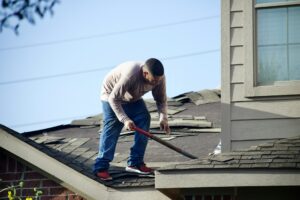Vancouver homeowners know that a reliable roof is more than just a layer overhead, it is what protects and stabilizes life at home. With the city’s temperate climate and ample seasonal rainfall, knowing the perfect time for a roof replacement can feel daunting at first
Yet an informed approach to scheduling and planning goes a long way in preserving not only your home’s structure but also your peace of mind
Below, we explore the essentials of roof replacement for Vancouver homeowners, focusing on why summer is often the most favorable season. You will gain insights into identifying common warning signs plus practical steps for optimizing your project schedule
By the end, you will be better equipped to make proactive decisions that will keep your roof, and your family, well sheltered for years to come
Understanding Roof Lifespans
Despite remarkable advances in roofing materials, every roof ultimately has a finite life. Even the sturdiest asphalt shingles or metal panels wear out with exposure to the environment
In Vancouver, mild-but-wet winters and humid springs can slowly reveal signs of aging. While typical asphalt shingles may last 20 to 25 years, a roof’s true lifespan depends on factors like:
- Weather conditions in your specific neighborhood.
- Quality of the installation and materials
- Levels of regular maintenance and attic ventilation
- Overall slope and roof design
As a rule of thumb, if your roof is nearing the 20-year mark, scheduling a professional inspection can help you keep sudden problems in check. An experienced roofer can pinpoint areas likely to degrade faster, such as shaded spots prone to moss growth or sections near gutter downspouts
Early detection of tiny leaks or weak spots saves effort and cost before bigger issues arise
Identifying the Telltale Signs
Roof wear does not always show up in dramatic drips and puddles on the floor. Sometimes, the clues appear in subtle ways long before an obvious leak strikes. Keep an eye out for:
- Curling or buckling shingles along the edges
- Bald spots or granule loss on asphalt shingles
- Cracked caulking around vents, chimneys, or flashing
- Discoloration or dark streaks that do not wash away readily
- Shingle edges that are starting to lift or warp
Small cosmetic issues may not sound the alarm right away, yet they are still cues worth investigating. Scheduling seasonal walk-throughs or professional inspections can reveal potential trouble spots
Even a loose shingle can expose the underlayment and begin fomenting major moisture buildup over time. When caught early, these minor repairs might extend the life of your roof while helping you coordinate a well-planned replacement on your own terms
Why Summer Matters
Summer is a popular season for roof replacement in Vancouver for several reasons. As you might have experienced, the region still sees sporadic rain in June and sporadic heat waves through late August. Yet despite the occasional drizzle, summer often offers:
- More predictable weather patterns: Warmer and generally drier conditions reduce weather-related work delays. This steadiness helps contractors fit your replacement project into reliably accurate timelines
When crews can count on clear skies for several consecutive days, they can complete jobs more efficiently without rushing or extended downtime
- Ideal temperatures for materials: Shingles and other roofing components must seal and adhere properly to ensure a long-lasting finish. During the summer, moderate temperatures help create optimal conditions for this process. Adhesive strips on asphalt shingles, for instance, need a certain amount of heat to bond well
- Convenient scheduling for homeowners: With longer daylight hours, roofing professionals can wrap up a project in fewer working days. This means minimal disruption to daily routines
Many families also use school-break months for extended travel or time away from home, introducing the possibility of scheduling a roof replacement while the house is temporarily vacant
- Quicker detection of roofing flaws: During summer storms, small leaks or incomplete flashing details become easy to spot. You can readily test the newly installed roof’s performance with live weather events, giving you the reassurance of a secure structure before fall and winter rains set in
Still, while summer is often ideal, it is wise to consult an experienced local contractor for exact timelines. Vancouver’s coastal climate can produce unpredictable bursts of humidity or windy days, meaning flexibility in scheduling remains an asset
Selecting the Right Materials
The roofing materials you choose can make a surprising impact on both the longevity and energy efficiency of your home. In the Vancouver area’s moderate climate, common roofing choices include:
Asphalt Shingles:
Durable, cost-effective, and available in various colors. They adapt well to different architectural styles and typically last around 20 to 25 years
Metal Roofing:
Known for long-term performance, metal can last 50 years or more with proper upkeep. It can reflect sunlight, which may help minimize heat absorption during hot spells
Cedar Shakes:
These create a rustic, natural look but require extra care in this damp climate to prevent moss and rot. Some homeowners prefer cedar’s high-end appearance and its decent insulating properties
Composite or Synthetic Shingles:
These materials mimic classic shingles or wood shakes without the added maintenance burden. They often have warranties of 30 years or more
Each material has advantages and trade-offs. Consult with professionals to evaluate important considerations such as cost, insulation benefits, maintenance ease, and architectural compatibility
Sustainable Roofing Approaches
Aligning your new roof with eco-friendly strategies can deliver tangible benefits over time. For instance, investing in ENERGY STAR–certified shingles can help regulate indoor temperatures, potentially reducing cooling costs in the warm months
Some roofing systems are constructed to reflect a higher amount of solar radiation, lowering heat gain in the attic
Additionally, advanced underlayment products that guard against moisture infiltration can help Vancouver-area homeowners cope with rain and drizzle. Well-designed ventilation systems further improve airflow in the attic, preventing premature roof aging and reducing the chance of mildew
A balanced combination of insulation, ventilation, and protective membranes can keep your indoor environment comfortable, even when Vancouver transitions from summer dryness into the dampness of autumn
For more insights on building efficiency, the U.S. Department of Energy’s website offers valuable resources on insulation best practices
You can also visit your local city planning office or consult the City of Vancouver’s official website for specifications regarding sustainable renovations
Coordinating with Local Building Codes
While selecting your materials, keep local building codes in mind. Roofing guidelines in Vancouver, subject to Washington State rules, ensure residences remain structurally sound. These code requirements typically:
- Specify load-bearing capacities for various roof structures
- Outline mandatory flashing details and ventilation standards
- Regulate material fire ratings and wind-resistance levels
- Outline processes for obtaining necessary permits and inspections
Adhering to code requirements from the onset avoids costly surprises, such as mandated tear-off of non-compliant materials. The key is to work with a licensed contractor well-versed in local regulations
They can handle the permit application process on your behalf and schedule required inspections at the appropriate milestones. For additional information, look at official state or county building guidelines and confirm any special regulations in your Vancouver neighborhood
Budgeting and Financing
A roof replacement is a significant investment, but it often pays off in reduced repair costs and improved property values. Setting a clear budget in advance helps you explore material options and weigh contractors’ bids
Consider these steps to simplify the budgeting:
Gather multiple quotes:
Request estimates from at least three reputable roofing contractors. Look at line-item details for labor, materials, warranties, and contingencies
Read the warranties:
A slightly higher upfront cost might include superior warranty coverage for materials and labor. Weigh each option’s long-term maintenance requirements
Explore financing options:
Some contractors partner with financing providers, allowing for comfortable payment plans. Federal or state energy-efficiency incentives might also be available if you install certain energy-saving shingles
Prepare a contingency fund:
Roof upgrades can uncover hidden problems such as damaged decking or aging insulation. Setting aside a portion of your budget for these surprise discoveries will help the project stay on track
Many homeowners find that a strategic roof investment can save them from more costly urgent repairs later, reinforcing peace of mind. By planning meticulously, you align your budget with project goals and enhance the overall value of your property
Hiring a Professional Roofer
Although do-it-yourself projects appeal to many homeowners, a roof replacement typically requires specialized expertise. Handling large quantities of materials at height carries inherent risks, and correct installation ensures the long-term performance of your new roof
When hiring a professional roofer in Vancouver, consider these questions:
- Are you licensed, bonded, and insured for roofing work?
- Can you provide local references from customers?
- Do you have experience working with the specific materials I prefer?
- How does scheduling unfold if unexpected weather interrupts?
- Who will be my main point of contact throughout the project?
Open communication about timelines, costs, and job site protocols fosters confidence and collaboration. You can also read local reviews or consult your neighbors for recommendations
A trusted, established contractor will respect your property, maintain clear safety measures, and strive to deliver consistent quality
A Real-World Example
Sam and Liza, residents of Vancouver’s Felida neighborhood, noticed small brown spots on an upstairs ceiling last winter. After an inspection, they realized their roof was 18 years old and had begun leaking in one corner
They contacted two local roofing companies for estimates, both of which revealed worn flashing near a chimney and damp patches under several shingles
Armed with these findings, Sam and Liza opted for a roof replacement. They chose asphalt shingles designed with reflective granules to keep help keep their interior cool
By scheduling the project in late June, the workers enjoyed mostly clear days for tear-off and installation, completing the entire job in six days. Sam and Liza tested the new roof’s resilience against a rare July downpour, confident that the improved underlayment and vents would handle Vancouver’s shifting weather patterns
This decision spared them from a more severe leak down the road and provided them added comfort heading into the cooler, wetter months
Caring for Your New Roof
Once your brand-new roof is in place, consistent maintenance helps ensure it remains strong and efficient in the long run. In Vancouver’s changeable climate, keep these best practices in mind:
- Clean gutters and downspouts regularly to avoid clogging
- Trim back overhanging branches that may scrape shingles
- Inspect for moss buildup on shaded roof sections
- Schedule regular attic checks for moisture or insulation issues
- Plan an annual professional inspection to catch small concerns early
By caring for your roof with regular upkeep, you can maximize its lifespan and maintain a comfortable indoor environment year-round. It is far easier to book a quick seasonal inspection than deal with a surprise leak in the heart of the rainy season
Looking Ahead
A planned roof replacement is an investment not only in your home’s structural integrity but also in your long-term peace of mind. Deciding to tackle this critical project in summer often translates into a smoother experience and a resilient finished product able to stand up to the Pacific Northwest’s variety of weather patterns
While this roofing guide touches on key concepts, lifespan, warning signs, material selection, scheduling, and maintenance, each homeowner’s situation is unique. If your roof is showing signs of aging or if you want to explore energy-efficient materials, now is an ideal time to consult roofing experts
By being proactive and informed, Vancouver homeowners can seamlessly align upgraded roofing with broader goals of sustainability, comfort, and financial stability
In making a wise choice about when to replace your roof, you honor an ethos of ongoing evolution, one that values forward-thinking planning as well as in-the-moment adaptability. The result: a roof that not only safeguards your household but also fosters a sense of confidence and harmony in your personal environment
Through steady awareness and periodic updates, your home can embody the essence of continuous growth, ensuring your family thrives beneath a roof that fully supports your way of living.




